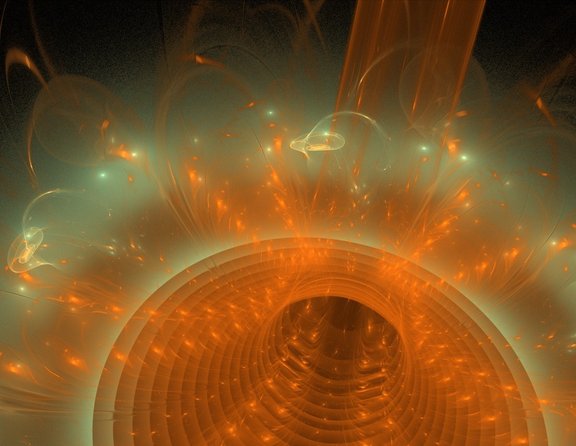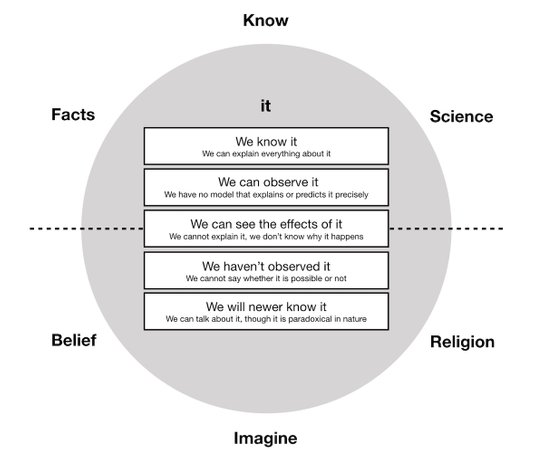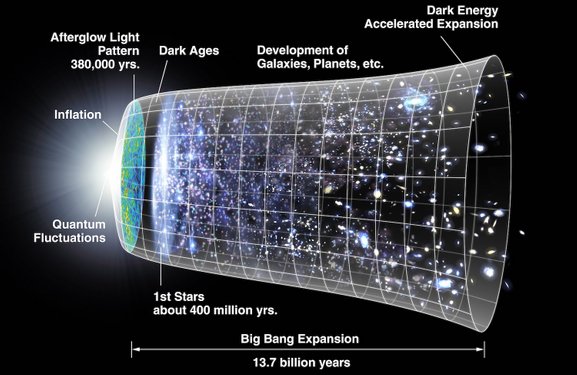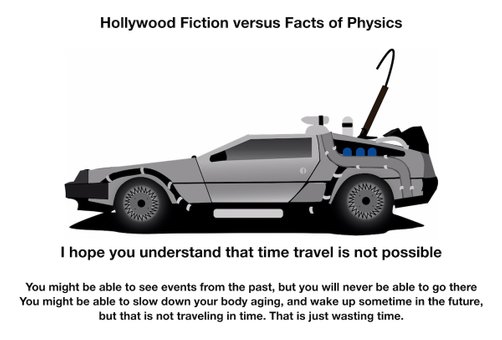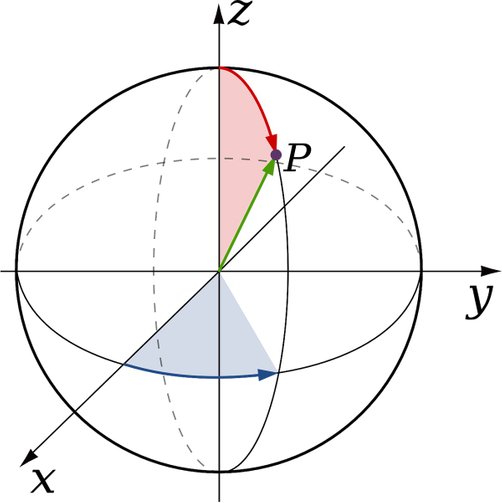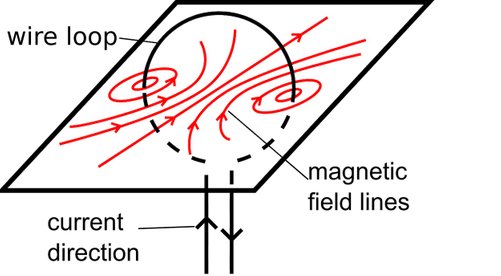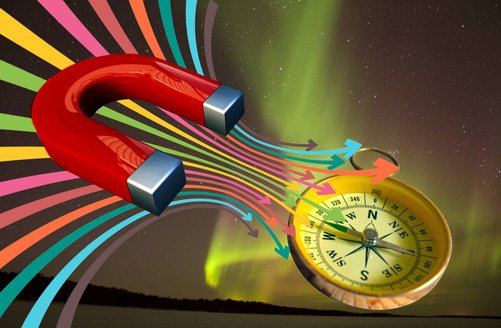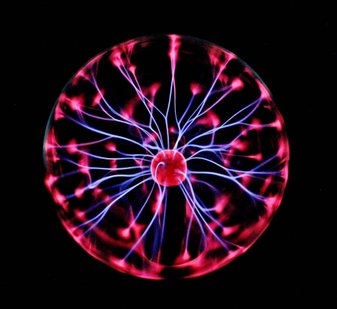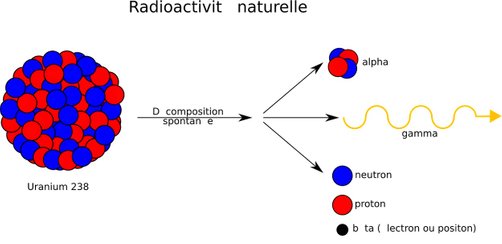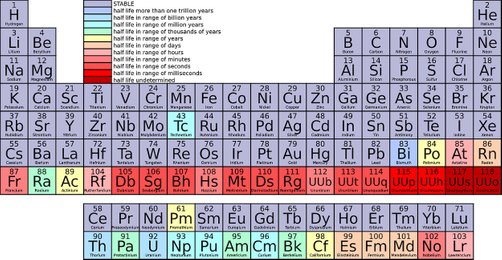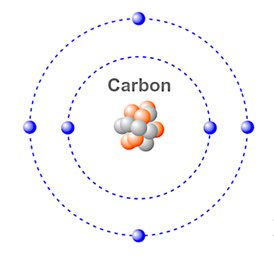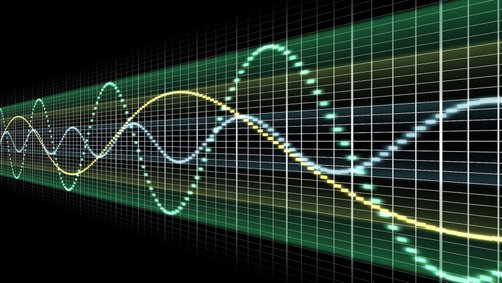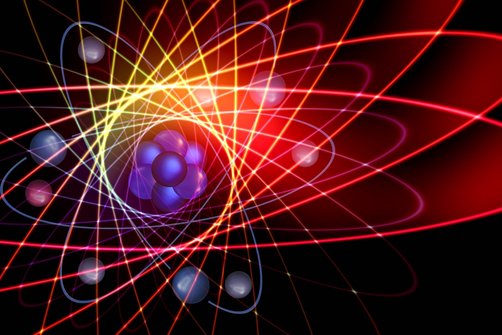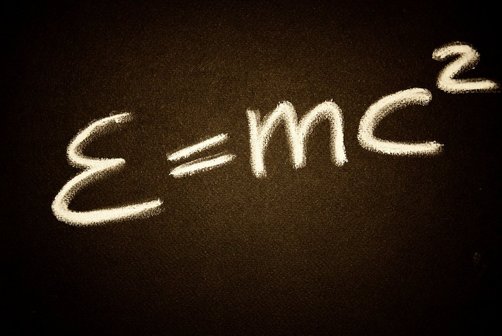Meta Physics and Relativity
Physicists gladly takes upon themselves the challenge of theorizing about time, other dimensions, the rules that governs the Universe and the internal structure of everything that we are and what surrounds us?
The greatest paradoxes of all, are hiding in the answers to these questions. At first it may seem abstract and not rooted in common sense. But it actually is. And the epiphany that stems from this, is nothing short of beautiful.
Below are 6 short articles, on 6 essential physics topics, written in a way so that you don't have to be a mathematician or physics student to understand them.
Be aware that they represent theories, and not facts. Because the topics discussed here will never be proven, because they are on the borderline between physics and philosophy, and you might even argue, religion.
if you wonder about these topics, and believe that simplicity is the ultimate sophistication, then you will be enlightened and pleased by this, and be grateful for this insight - I sincerely am.
THE FABRIC OF SPACE: And everything else
?
But that is actually not the primary motivation for me to recommend you to read the short articles below. If you sometimes find yourself wondering about the universe, whether there are invisible dimensions and something beyond the universe, the beginning of time, and essentially what everything you can hear, feel and see is made of, then I hope I can encourage you to read on.
The Universe
Everything you will ever get to know of, will be contained in what we refer to as the Universe. Everything is in the Universe, and the Universe is everything. Does this then imply that the Universe is infinite in size?
This would be the easy conclusion, but to answer the question, we need to start agreeing on what we mean by "The Universe". The Universe is estimated - or should I say considered - to be approximately 100 billion light-years in size. This is another way of stating that when we take our strongest binoculars, and enter what we see into the theoretical formulas and do a lot of computations, we end up with this extremely large number. But are we sure about this. Well - yes and no.
Because we have no other way to measure distances, when trying to describe the size of the Universe, we indicate "length" as a "number of light-years". A Light-year is the distance that light will travel in one year. From this you can understand that our understanding of the size of the Universe is interwoven with our understanding of space, time - and light. I'll get back to that in just a moment.
At the end of the day, it really doesn't matter how old or big the Universe is, let's just be honest. The real thrill of this topic is, that if we somehow agree that the Universe has a "limited" size, then the next eminent question would be: what is then surrounding the Universe, what is out there, farther away than the most distant stars and the light from those stars?
The answer is "nothing". Or to be move precise - empty space. Infinite, empty space. Never ending, and with no boundaries. If you travelled forever and ever, in one direction, you would never come to the rim of space. Space is infinite in size and in all directions. Even though this is a paradox to the way our minds work - where everything is always inside something else - there can be no other answer to this question. Even though we can't grasp it, this is just how it is.
And that is the first beautiful insight that you should embrace, regarding the physical world that you are part of.
Time
In essence, Time is a measurement of - or an indicator of - the speed of physical processes. And these processes will unfold with different speed, depending on the strength of the gravitational field that surrounds them. This is why the two atomic clocks deviates, after the flight. The gravitational field is weaker at 30000 feet, compared to the strength of the gravitational force at the earths surface. And the stronger the gravitational field is, the slower the time ticks (well, you know what I mean - not time, processes).
The last ting that you should know about the flow of time is, that it is relative to the observer. If you are watching a clock that moves past you at high speed, the clock will tick at a slower rate than your own wristwatch. What this means is, that if your son stayed at home, and were able to watch you and your atomic clock, while you were circulating the globe, he would see that your clock was moving slower than his (i.e. the clock that was on your table, in your house). This fact is described in the Theory of Special Relativity, and have been proven beyond any doubt.
Please notice that the above example was just to make a point. In reality, the relativistic effects of relative motion only becomes "measurable" at relative velocity close to the speed of light.
Bottom-line: The flow of time and the speed of atomic processes are intrinsically interlinked. And if you perceive time to go at a slower rate, as seen on a clock in motion relative to you, then ALL the physical processes traveling together with this clock, will also develop at at slower rate. Including aging of the body and for instance the growth rate of plants.
Events and evolution of objects that are 100 % synchronized, and follow the same development pace, when the objects are kept in close vicinity of one another, will loose their synchronization and start their own individual timeline, if they start moving relative to each other, or are located in gravitational fields of different strengths.
As soon as you are looking at processes taking place in a part of the Universe that is in a different gravitational field than you, or is moving relative to you, you need to be aware that your perception of “how long it took” is your perception - measured in your time. How long it took in the observed object’s frame of reference, is a completely different reality. And none of you are correct or wrong. Or rather, both of you are correct - because there is no absolute, universal time. There is only “local time” - or more correctly stated: local speed of events and processes.
To make this very concrete, let me give you an example. In the Earths atmosphere, in 10 km altitude, certain particles known as muons, are created. These particles only lives for 1.5 microseconds, before there are “destroyed”. Traveling with the speed of light, it would take approximately 34 microseconds for the particle to reach the Earths surface. Bottom line, a person on Earth would expect that the particles would never be able to reach the surface (because the muon would be destroyed long before). But here is the thing - they are being detected at the surface. This could seem as nonsense, but it isn’t. Because the perception that it would take 34 microseconds is only in the eye of a person standing still on the Earth, for whom the distance is 10 km and the time it takes light to travel this distance is 34 microseconds. If this person on Earth was able to - simultaneously - look at a clock sitting on the muon, he would see that the time it took as seen from the muons perspective would be less than 1.5 microseconds. The ticks and tocks of the clock are slower in the muons frame of reference, because it is traveling with a velocity close to the speed of light.
So the muon is not cheating, but simply behaving as always - and disintegrating after 1.5 microseconds. It is you who are measuring time the wrong way, trying to understand everything from your local, subjective, frame of reference. It is your intuition about a universal time that is wrong.
And that is the second beautiful insight that you should embrace, regarding the physical world that you are part of.
If you are of the opinion that time is the easiest concept to understand, and easily measurable, you are in for surprise. In fact it can even be argued that time is not something that exists on it own terms.
Try to imagine this philosophical experiment. If everything, every object, every movement and every process in the Universe suddenly changed "pace" to double speed, how would you know. You wouldn't. Your wristwatch, your body function, your thoughts would be accelerated also. So you would have no way to detect that this had happened. The takeout from this story is, that the perceived flow of time is a manifestation - or more correctly - a result of "movements and events" on an atomic level, and that time is nothing more than a display of these processes - that they are taking place.
Regardless of what type of watch you are using for measuring time, in its core, the "time-measuring methodology" will be founded on some form of a physical mechanism. A mechanical pendulum, a spring, an elastic material, atomic oscillations, grains of sand in an hour glass, driven by gravitational forces. Even a digital clock is based on physical phenomena, namely semiconductors electrical characteristics and the movement of electrons.
And now comes the mind-boggling insight. Even two of the worlds most precise clocks might not always agree on what time it is (i.e. the time interval between two events). Atomic clocks are the worlds most precise clocks - there is no other way to measure time more precise. If you place two of them on your kitchen table, they will always agree about the time, and never deviate from each other. But if you leave one of them in your house, and take the other one aboard an aeroplane, for a 24 hour flight, the two clocks will show different time, when they are placed next to each other again.
Light
And here is a cool thing about light photons. Photons are to be considered as frozen in time. If you were able to sit inside a photo, you would not see any movements of the photon. Imagine that you threw a rock in the water, and then sat on the wave top, as it was traveling from the point of the splash and outwards. You would not see any movement of the water, up and down, because you were traveling with the wave top. This is the situation of the photon. The photon is like a frozen blip, propagating through space.
And that is the third beautiful insight that you should embrace, regarding the physical world that you are part of.
If you throw a rock, while standing still, you might be able to throw the rock a distance of 25 meters away, if you are good. But if you take the same rock, and run at high speed, and then throw the rock, you will for sure do even better - maybe even 40 meters.
This is intuitively correct, because the velocity of the rock, when you throw it, will be the combination of your running speed, and the speed of your arm movement.
This understanding might lead us to an argument that states that there is no limit to the speed an object can have. We just need to find ingenious ways to add the speed of different moving objects on top of each other.
But that is not the case. There is a maximum speed, that nothing can exceed.
To be even move direct, there is actually only one type of "object" that can travel at this maximum speed - namely light. And it gets even better. In empty space, light always travels at that speed. Regardless of the light's intensity or color. And regardless of the movement of the source of the light, and how it was created.
The speed of light is constant, and independent of where it came from, your own movement and how you measure it. The more you think about this, the more strange it gets.
Remember what I told you about time? That time is merely a manifestation of the speed of events happening on an atomic and sub atomic level. Now consider this. If the velocity of light is measured as the distance traveled in a certain time interval, and time is a measurement of how fast things can happen in space, then it becomes apparent that you will always get the same result, when you try to measure the speed of light. The two - the speed of light and the ticks and tocks of time are interlocked. Because it is the nature of space that decides both the "speed of atomic oscillations" - and the speed of light.
When we talk about light, what we really mean is any type of light, of any color. Even the light that we cannot see, because it is ultraviolet or infrared, x-rays or microwaves etc. The term we use to represent all these types of “light” is electromagnetic radiation. Because they are all merely different wavelengths, but based on the same wave pattern. Light is transmitted - or traveling - in the smallest of small “packages” called corpuscles, or photons. Light photons are like a short blip in space, moving incredibly fast.
Relativity
Imagine this. If light travels at a limited speed - very fast but limited - then when the light reaches you eye (and you now see it), the thing that you now observe happened some time ago. Not now, when you see it, but some time ago. And add on top of that - remembering what you just learned about time, that time runs at different speed depending on the gravitational field and the motion relative to you - that the timing and timeintervals between two or more events as you perceive them, most likely unfolded in a different way, at its origin.
(please again remember that what we talk about here, only becomes significant, with relative movement at velocities close to the speed of light).
So if what you see is maybe distorted, and when you see it is maybe distorted, then of course you have to understand that the way you perceive the world around you, is your perception, and not necessary the same as a second observer, moving relative to you.
Luckily, the person that knows best what really happened, is the bystander to the event. By that I mean a person that was not moving relative to the event in question, or merely moving at a speed a fraction of the speed of light. And in everything that you will experience during your lifetime, that will without a doubt be the case. Unless you are a physicist. So what you see, is what actually happened, unless you are studying light and fast moving particles.
Relativity is one of the core principles of the Universe. Relativity is a fact of life and a condition you cannot disregard. In general, it should come as no surprise to either of us. Because you are not the center of the Universe, and neither am I. But when we combine this with the acknowledgement of time being relative and the speed of light being limited, strange consequences pop out in unexpected ways.
Basically, what relativity means is this; you should not mistake reality with what you see, when you see it. But it is not what you see, and when you see it, that can be argued about. It is reality that is being questioned here. Because if two observers can discuss, and disagree about what happened, then it has to be a fact of the Universe that reality is not absolute. Remember the muons I talked about. They are both contradicting the laws of physics and they are not. It al depends on who you ask. And both are correct. And that is a paradox. But it’s also a fact. And that is why relativity is one of the most mind-blowing facts that you will ever be confronted with, in your lifetime.
And that is the fourth beautiful insight that you should embrace, regarding the physical world that you are part of.
A 3 Dimensional Space
Space is 3 dimensional space. The 3 dimensions that you already know - forward/backward, left/right, up/down, are the all there is. Everything that exists, exist completely and solely, in these 3 dimensiononen. There are no hidden dimensions. But how can we be sure of that?
Because assuming that space is 3D and using the many physics theories and formulas developed through millenniums, on exactly what we can see in the 3 dimensional space that surrounds us, results in all the right answers and predictions.
Stay with me, it's not as abstract as it might sound. Take gravity as an example. All matter generates a gravitational field, that surrounds it. And when you get out to a certain distance from the object, the force of gravity acts in the direction of the center of mass, calculated for the object as a whole. Now take a planet like Earth. If Earth was actually a 4 or 5 dimensional object, this would mean that there would be matter (atoms) distributed in the fourth and fifth dimension, along with the matter that you already can see in our 3 dimension world. If such a 4. and 5. dimension was present, what you can conclude from this thought experiment is, that the center of mass would then be shifted in some direction - and not any longer sit in the center of the 3 dimensional globe.
The thing is, that it isn't. The center of mass is exactly were we would expect to find it!
Sidenote: If you have a hard time imagining this, try to make the comparison in a 2 versus 3 dimensional scenario. The center of gravity of a 2 dimensional circle, would then no longer be in middel of the cirkel, but instead shifted towards the perimeter. And in the extremest example, it would be possible to create a mass distribution in the 3. dimension that would result in the direction of the center of gravity to be somewhere outside the perimeter of the circle. Imagine how that would look to the 2-dimensional people, living inside the circle!!
If there were more than 3 dimensions, many of our calculations on physical phenomena would be flawed, and we would struggle to understand why our formulas didn't give the right results. But we don't. We don't struggle. The science of physics has been incredibly successful in calculating time, position, mass, speed, forces, energy etc. etc. with almost unbelievable precision.
If matter, forces and movements existed in invisible dimensions, they would manifest themselves, as unexplainable events and forces in our 3D Universe. And they don't. Because they are not there.
What all this means is, when you sum it up, that you, me and everything else live in a 3D space, where the shortest patch between two points in space is a straight line, and that there exists no shortcuts, going through invisible dimensions, wormholes and space-time warps. When it comes to the geometry of space, your intuition is solid and sound.
By the way, talking about space, let’s clear out a potential misconception. The Universe and Space are two different things. When we talk about the Universe, what we mean is all the stuff that is out there. Both the stuff we can see, and the stuff that we cannot see, but through calculations can argue must be out there, somewhere.
Space is something completely different. Space is the canvas of the Universe, the fabric that all the stuff is based on. If there were no space, there could be no Universe, no planets, no life. But the opposite is not the case. The space is always present. And if the space is empty, the fabric of space is flat and calm. But if space is occupied by large objects such as our Sun, the fabric of space is bended, stretched and squeezed in all the right ways, to support the existence and behaviour of the Sun. And it is exactly that bending, stretching and squeezing that creates the Sun, and not the opposite way around, as you might think. This will be explained in detail, in the next chapter.
A last thing before moving on. You can have different positions with regard to the position of the Sun. And you can move closer to, or farther away from it. You and the Sun can move independently of one another. With space, this is not the case. Strap in, and prepare for the next shakeup of your beliefs and intuition. Here it comes: You are always stationary compared to space. Both when you are standing still, and even when you are moving at constant velocity, for instance driving your car, or flying in a spacerocket. And it gets even more weird. Because the guy next to you, is also stationary in space. And when you start moving in opposite directions, you are still both stationary in space, in your own frame of reference. What this actually means is, that each of you are equal, when it comes to doing measurements on the Universe and the objects within it. No observer is better - or more neutral - than the other guy.
To make sure you grasp the full implications of this, let’s make a though-experiment. If the space fabric was somehow “anchored” at a certain position, and all objects were moving relative to the fabric, something peculiar would happen. If observer A was moving towards a light source, and observer B was moving away from the same light source - and remember that the photons are propagating through space - then A and B would measure 2 different values of the speed of light. But then again, this would mean that not all observers are equal. And that makes no sense at all. And that is because it is not so. All observers measures the same value for the speed of light, because they all have the same velocity relative to the space fabric. And that velocity is zero. Again we are confronted with a paradox, but also recognizing that this has to be correct. Because the opposite would also lead to contradictions and inequalities.
And that is the fifth beautiful insight that you should embrace, regarding the physical world that you are part of.
Practical manifestations of physics in our daily lives
As you have understood by now, physics is the science about the fabric of space, time, light, inner workings of atoms and particles and the 4 fundamental forces that explains how it all interacts. This represents knowledge that you need to have, if you must explain what is going on inside an atomic reactor or in outer space, in stars and back-holes. But physics is also the foundation for many, many things in our daily lives.
Physics is the science that paved the way for steam engines, light bulbs, binoculars, telecommunication, mobile phones, radars, computers, lasers, airplanes, medical x-rays, wind turbines, solar panels, musical instruments, the electricity power grid, the electrical heater, the television set and the appliances in your kitchen, like your oven, microwave and fridge. The list goes on and on and on.
Let's spend the last paragraph listing a few key physics concepts that has invaded our language and become part of our intuitive understanding of the world around us.
Electricity
When you flip the switch, the light bulbs starts glowing. You might think nothing of it, but some of the greatest minds, both in physics and engineering, has worked hard to bring this basic convenience to the world. Electricity is particles called electrons, moving through an electron conducting material such as a copper wire. If the electrons are pushed through a medium that offers resistance to the movement, if will produce heat. This is what happens in the light bulbs wire, and therefore makes it glow. Electricity is the one invention that has, and will, impact your life the most, because the applications are endless.
Magnetism
Electricity and Magnetism are close siblings. The one can produce the other and vice versa. When a wind turbine rotates, it produces electricity. This is because the turbine holds magnets that when moved in close vicinity of an electricity conductor will create a momentary electric current in the conductor. And likewise, a current in a wire, will generate a magnetic field around the wire. Magnetism is a force that is being generated, when electric fields in the fabric of space changes. This change of the electric field can either originate from electrons moving across space, or from electrons spinning round on the spot, so to speak. I either way, what is creating the magnetic field, is fluctuations in the space fabric, as a consequence of the fluctuations in the wave pattern around an electron. Magnetic forces works in two directions, with two different effects - push and pull. This is why we use the terms north and south, when talking about magnets. This is also why there can not exist a magnetic north without a south. Because they are merely the front and back of the same phenomenon.
Static electricity and Charge
Electrons does not have to move around or spin, to inflict forces onto its surroundings. Electrons are what is called charged, which is another way of saying that all the time, there exists an electric field flowing from the electron and outwards, in all directions. This field exerts push forces on other electrons, which essentially means that electrons in close vicinity will always try to expel each other. This force is exploited in many ways in electronic devices. But it can also be experienced in daily life, for instance when lightning strikes, when dust clings to the television screen, or when you forget to turn off the switch when changing the light bulb, and almost get electrocuted.
Gravity
The Moon circulates the Earth as if it is held in place by an invisible string. And an apple races to the ground, if it is detached from the tree branch that it was hanging on. We cannot see the force, but we can conclude that it is there, and that it is real. What this tells us is, that each atom (which everything on Earth, the Moon and the apple is made of), vibrates in a certain way that creates what we call gravity waves. And these gravity waves propagates through the fabric of space, and when it hits another atom, this atom will feel a force that in effect will try to translocate this atom in the direction of the source of the gravity wave.
Gravity waves are not particles. If you have ever been confronted with the idea of a graviton - expected to be a particle that "carries" the gravitational force - please wipe it from your memory. Force fields are continuous and not discrete. The Earth is not shooting with "gravity particles", in random directions.
The Earth is simply oscillating with a rhythm and a pattern that creates gravitation ripples in the space fabric. And it is these ripples that are propagating to the Moon, and beyond.
To avoid any misunderstanding, let me remember to say this; it is not only the Earth that exerts a pull on the apple. Actually, the apple also exerts a pull on the Earth, though this is a very, very weak force. Because the strength of the gravity wave is determined by the complete mass of the entire object exerting the pull - for instance the Earth, in effect the force felt by the Moon is much stronger than the force felt by the Earth.
Please notice this. The forcefields mentioned above - magnetic fields, electrostatic fields and gravitational fields - are 3 different wave patterns, originating from 2 different sources namely particles with charge and particles with mass.
Both type of fields are spherical in nature, propagating in all directions equally, as 3 dimensional spherical waves moving from the core and outwards, to the farthest corners of space. And the propagation happens not instantly, but at the speed of light.
Temperature
You know that it's cold in Greenland, and even colder at Antarctica. But how cold can it actually get? Our intuition would tell us that it can get arbitrarily hot and arbitrarily cold. It's simply a matter of enough heat or enough cooling. But that is not the case.
Temperature is a measurement of how agitated the space fabric is. Light pulses traveling trough empty space, is almost as still a space as you can imagine. If the space fabric is not even rattled by occasional light passing through, the fabric would be completely flat and uninteresting. Physics has introduced a specific temperature scale to be used, when describing physical phenomena and the relationship to temperature. This scale is called the Kelvin scale.
The coldest physical object that you - theoretically - can have, would be zero Kelvin in temperature. This would in layman's terms translate to that the object at this temperature has zero energy, by that is not the case. A better way to explain it would be, that the object at that temperature is in its least agitated state. The atoms would still be oscillating, but just not so vigorously as they would, at higher temperatures.
Sidenote: remember that the atom and the oscillation is one and the same. Without the oscillation, there would be no atom.
And now the fun starts. Because if we compare this zero-kelvin temperature with the well known celcius scale that we are so used to, what does this compare to?The answer is approximately minus 273 degrees. Nothing - and I mean nothing - can get colder than that. Ever. And empty space does not count in this discussion, because empty space is not agitated, and therefor has no temperature either. And before you start talking about our solar system, then please remember that the empty space I'm referring to, is the space fabric far, far away, outside the rim of the Universe. The untouched fabric of space.
Radioactivity
Many of us will forever recollect Hiroshima, French Polynesia, Chernobyl, Three Mile Island, Fukushima, Salisbury, Mayak and many other catastrophes and wrongdoings, when the word radioactivity is brought up.
The reason why radioactivity is such an important topic, is because of the effects that it has, when we look at the biological and medical aspects. The explanation for this is covered in the chemistry section.
But let's first explain what it is. Radioactivity is the word used to describe the atomic processes that results in Radiation, so the two words are often used interchangeably. Radioactivity is in effect a disintegration of an atoms oscillation pattern, that has the result that the atom during this process changes into something else - for instance a new type of atom, with new characteristics. As a byproduct of this transformation, one or more fast moving, high energy particles and/or electromagnetic pulses are also produced. And these byproducts are what we refer to, when we talk about the radiation.
Radioactivity comes in three flavors - alpha, beta and gamma. Alpha is a bundle of 2 protons and 2 neutrons, tightly glued together. Beta is a particle like the electron, whereas gamma is not an atom or a particle. Gamma is an electromagnetic corpuscle, with the same nature (oscillation pattern) as visible light, but typically extremely more energetic.
Sidenote: remember from the talk about light speed above, that all "light" travels at the same speed. So when we say energetic, we are not talking about higher speed - because the speed is always the same, for electromagnetic pulses, regardless of the type of radiation.
Most of the atoms in the Universe are robust and durable. Extremely durable. Just to make sure you understand what is meant by durable, consider this. All the gold on the Earth consists of gold atoms, obviously. But here comes the amazing fact. All these gold atoms did not begin their life here on Earth. The gold atoms was created in a distant supernova explosion.
What this should tell you is two-fold. First of all, that it is not easy to create gold from other ingredients, and if the alchemists back in the dark ages had known that, they could have saved themselves a lot of disappointment and despair. Secondly, that when a gold atom has finally been created, it is here to stay. Even if you expose it the extreme heat, explosions or ultrahigh pressure, it will not break.
And the same goes for practically all other types of atoms that you are surrounded by. They are equally durable. And that it is a good thing. Because then you don't have to be afraid that things in your surroundings (or your body) will start to disintegrate spontaneously. And secondly, the radiation level where you are, as given by nature, will be very low.
The likelihood that an atom will undergo radioactivity (decay) is described in physics as the atom's "half life". This is essentially a measure of how long will it take until half of the atoms has decayed. And except for the type of atoms created in atomic labs and facilities, all other elements of nature here on Earth are stable, and will not decay.
Isotopes
Unless you are a physicist, or working in the domain of a limited group of other sciences, you will probably never have heard about isotopes. These guys are almost invisible, and the reason for this lies in the internal structure of atoms. When talking about atoms in context of the various topics above, it is often sufficient to think of the atom as one, coherent oscillation pattern, where all the characteristics of the atom is exposed all the way to the rim of the atom.
Sidenote: rim is not a very good term to use here, as you've hopefully understood by now. In the text above, it was referred to as the oscillation equilibrium circumference.
When we try to understand the inner workings of atoms, we find that we must consider them to be constructed in a layered fashion, with each layer encapsulating the inner layers. In the core, we have the nucleus. And surrounding the core, there can be a number of electron shells, and each shell holds a number of electrons. At least this is the way we usually talk about it.
Sidenote: don't put too much faith into the notion that free moving electrons (having particle nature) are the same object as electrons stuck in electron shells. This is only an abstraction, that is useful when we talk about chemistry matters.
The layers are real, though. And the nucleus is real. And the nucleus is actually a composition of a number of protons and neutrons, held tightly together by the strong nuclear force, remember.
And it is in the nucleus that the foundation for the isotopes exists. Let's take Carbon as an example. Carbon is one of the most abundant types of atoms in your body, and the body of all other living organisms. Almost all carbon atoms holds 6 neutrons in its core. But a few carbon atoms has 7 or 8 neutrons. The latter variant is called C-14, 14 referring to the total number of nucleons - protons and neutrons in combination. C12, C13 and C14 are all carbon atoms - meaning that they function equally well in your body, and bind to other atoms equally strong. But in their core, they are distinctively different, when we count the number of neutrons. This is what we mean by isotopes. Variations of the number of neutrons in the core of atoms of the same element - in this case carbon.
As previously said, a chemist has no use of this knowledge. But a geologist uses the knowledge of C-14 as a means to deduce the age of rocks and fossils. Imagine that. Some of the most sophisticated physics concepts, invisible in most circumstances, and yet the foundation for letting Man know its biological history, and the age of the Earth.
The Color of things
Let's talk about colors. First things first. When you see something, it is because photons of light enters you eye, and spawns a biological reaction in the sensory cells inside your eye. And because different types of sensory cells are susceptible to different wavelengths, the eye can distinguish between different types of light. And different wavelengths translates to different colors. So far so good.
But were does the different wavelengths originate from. Or to phrase the question another way; why do the flowers, cars, houses and other things radiate photons with exactly the wavelength that they do? As you would have expected, the answer - again - has something to do with the atoms oscillation patterns.
Before we get to the details, let me just state one thing about the atom and the layers on layers on layers that I explained in the previous paragraph. The atoms nucleus is for all practical purposes untouchable, or should I say unshakable and indestructible. Only exception is when playing around with high energy particles and gamma rays, bombarding them into atoms. Otherwise, the atom nucleus stays the same. The situation is completely different when talking about the layers - the electron shells - that surrounds the nucleus.
Electron shells can be excited. Excited as in disturbed. If an electron shell is excited, it means that its oscillation now has a configuration or pattern that is off-balance, and unsustainable. This temporary unbalance cannot exist infinitely. Eventually the atom as a whole, and therefor also the electron shells, will regain its stable configuration and transform back to the oscillation pattern that is the characteristic, stable pattern for that specific type of atom.
When electron shells converts from the excited state and back to the stable state, there will be a surplus of energy. This surplus of energy can either be converted into heat (increased temperature of the atom) or into a photon of light.
Sidenote: the transition from excited to stable, can in some situations go through multiple steps, involving more than just one of the electron shells. In those situations, more than one photo can be emitted during the process.
And now we are ready to answer the question about where the colors come from.
The key insight to know about the atoms of the Universe is, that each type of atom has its own nucleus and electron shells configuration. And this means that each type of atom has its own stable configuration. And on top of that, each type of atom has its own possible excited states. What this all adds up to, is this: when the atom transitions from the excited state to the stable state, the amount of surplus energy will be different, for different types of atoms. And because the energy of a photon is directly linked to the wavelength of the photon, the light emitted from different types of atoms, will have different colors.
So basically, when you look at an object, and gaze the colors emitted from it, you immediately will get an indication of what type of atoms that resides on the surface of the object. For instance as constituents of the paint coloring the object.
So how does the atom get excited in the first place? Generally, there are two mechanisms at play here; heat / temperature and light shining on the surface. Either way, the atom is provisioned with additional energy, which will eventually bring the atom into an excited state. And you already know the rest of the story, from there.
Sitenote: most materials (i.e. atoms) does not glow with light of wavelength in the visible range, by itself, at normal temperatures. This is why you don't see the objects, when the incoming light is turned off (for instance at night time). But as you might know, many materials ejects infrared light all the time. And this infrared light is the result of the atoms being excited again and again, merely by having a temperature around 20 celcius.
Matter and Inertia
An iron bar is heavier than a feather. In our minds, this is easy to acknowledge, because we know its harder to lift an iron bar from the floor and up onto the table, than lifting the feather the same distance. But experiments have also showed that if there were no air, and the iron bar and the feather fell from the table, they would hit the floor at exactly the same time (experiments performed in vacuum - and on the moon - has actually proven this to be true). So what are we really saying, when stating that the iron bar is heavier than the feather.
The term heavy refers to the fact that the pull from Earth's gravity field exerts a strong pull on the Iron bar. And as stated previously, the strength of the pull is proportional to the intrinsic masses of the Earth and the iron bar. And the iron bar has certainly more mass than the feather. And there are 3 reasons for that. First, the Iron atom is heavier than the Carbon, Hydrogen, Oxygen and other atoms that are the key ingredients of the feather. Secondly, the density on atoms in a metal is typically higher than the density in organic material. The third reason is, that the amount of atoms is higher in the iron bar, compared to the feather, simply because the volume of the iron bar is (in most cases) larger than the volume of the feather.
Let's pause for a moment. How do we actually know that the pull from the Earth is stronger on the iron bar than the feather? Luckily this is easy to prove. Putting the iron bar on top of a scale, will squeeze the scale's springs a lot more than when replacing the iron bar with the feather. Basically, the scale's mechanical function is indifferent to the strength of the gravitational field, and simply reacts to the force applied to it. And the contraction of the springs is a manifestation of that force. And the force only originates from one source - the gravitational pull on the iron bar and the feather. So without any doubt - something is dragging the two objects towards the center of the Earth. And the pull is not equally strong.
So far so good. But then why does the iron bar and the feather fall to the ground simultaneously? The reason for this is something referred to as inertia. Inertia is a term used to describe an objects resistance to change its state of motion.
Sidebar: objects are not resisting movement. Objects are resisting acceleration and deceleration, as in "change of velocity". An object moving fast through space does not "consume" energy. This is why the object will continue to move through space, until something else prevents it from continuing the movement.
There exists a balance in nature, between the inertia and the gravity forces that an object experiences. If we measure the mass - in the meaning of the weight - of an object, and compare this with a measurement of the mass - in the meaning of inertia and difficulty in accelerating the object - we find that these two measurements result in the same value (amount). Exactly the same. Weight and Inertia turns out to be equal in size, when calculated through the use of various physics formulas.
And for this reason, we can conclude that there is a relationship between mass and inertia. Weight and Inertia are not the same, but for some reason they are siblings. It didn't have to be like this, because the two underlying mechanisms are completely different: reaction to gravitational waves and reaction to changes of velocity through the fabric of space. But they are apparently equal.
One very important fact to be mentioned here, before we move on. Recall that light speed is the fastest velocity any object can have (and that in reality only photons can achieve that speed). Having said that, an interesting question sits on the tip of the tongue. If two equal objects are moving at different speed - for instance 10 m/s and 100000 m/s - is it then equally hard to increase the objects speed by 5 m/s? The expected answer would be "yes", because the two objects are still basically equal, regardless of their velocity. It turns out that the answer is "no".
Relativistic Mass
Remember that gravity waves and all other types of stimuli that you would try to use to speed up the object, has to travel through the space fabric as some kind of wave pattern. And as the object's velocity approaches the speed of light, the relative velocity of the incoming stimulus will be less and less. And the result of this will be, that the impact of the stimuli will be less, less energy will be transferred to the object, and the increase in velocity will be smaller. Observed from the outside, it will seem as if the object's inertia is increasing, with increasing velocity.
In physics, the way we represent this relationship in the physics formula, is by introducing the concept of Rest Mass. An atoms rest mass is the mass (and inertia) that the object has, when at rest. And the total mass of the atom, at any time, is the sum of the rest mass, and a delta mass addition, that can be calculated when the velocity is know.
There is just one thing you need to understand about this. When the velocity is increased, it doesn't impact the weight. Only the inertia. If your twin was passing you a very high speed, standing on a scale, (perpendicular to the direction of motion) and if you were able to read the weight indicator of your twin, it would show exactly the same number as your own weight.
Sidenote: please remember that in this example, we are talking about how one twin is perceiving the weight and inertia of the other twin. If we asked each of the twins individually, they would both consider themselves to be at rest, and therefor both consider themselves to have only their "rest mass". The example is explaining about the relativistic effects - not the "universal truth", that we now know, does not exist, and makes no sense talking about.
This way of calculating the mass is convenient, because it hides the complexity of the physical phenomena that is the explanation for what goes on, behind the scenes. But the beauty of this is actually, that the formula is derived from special relativity, which again confirms that the relativity principle is in the heart of the Universe and how we perceive it. Both the timing of events and the mass of objects are relative to the observers own frame of reference.
The mass does not know that it is moving close to the speed of light. And actually, in the object's own frame of reference, it's not. It's standing still. And before you get dizzy, please understand that there is only one object, regardless of how many observers that are moving relative the object.
One of the tough consequences of the theory of relativity is, that our physics formulas can only describe what we observe, as seen from our own frame of reference. The question about "what actually takes place" has no meaning. There exists no "universally objective description" of objects and events. Everything is in the eye of the beholder. This is both blazingly obvious, and frightfully painful to accept, when first confronted with this fact.
Energy
In layman terms, Energy is a "reservoir of something" that can be used to do work at a later point in time. We have no problem in conceiving this, if we think of a battery, a compressed spring, a bathtub filled with warm water etc. But what about a candle. a stick of dynamite. a batch of uranium. Or a freight train at high speed. Or a laser beam?
If you go out on a hot summer day, you will feel the energy of the Sun on your skin. Even though the Sun is very, very far away from the Earth, the light emitted from the Sun easily warms your skin, and can even inflict sunburns, if you are not careful.
Energy has many faces. Mechanical energy (freight train), Elastic energy (spring), Thermo energy (warm bathtub), Electrical energy (battery), Chemical energy (candle), Atomic energy (uranium), Electromagnetic energy (sun light).
Can we produce energy? Not really. But we can harvest energy and convert it into other types of energy. Take for instance solar panels and wind turbines, harvesting sun energy and wind energy, respectively. And crude oil and coal are also energy repositories. Even Nuclear plants are not "producing" energy. They are merely digging into the atomic realm and harvesting energy that has been there all along, but stored as a form of energy that is not directly accessible to humans (and maybe we should not mess with it, as it has other consequences and by-products that we were better off without - but that is a topic for another day).
Is the energy of the Universe a constant?
Of course we cannot dictate anything unto the Universe, so when we introduce energy laws in physics, it serves a different purpose. Energy laws is a way of keeping checks and balances on all the stuff that goes on in the Universe. They are not laws as such, but rules of thumb that works in most circumstances, when you look at things in isolation. And most of all as a means of explaining how one type of energy is transformed into another type of energy, without any loss of energy (i.e. explaining where did the energy go).
Wind energy is transformed into mechanical energy (blades and magnets moving) which is transformed into electrical energy (electrical current) which is transformed into heat energy (in your stove) which is transformed into chemical energy (the food in your saucepan).
So far so good. But you might also have heard about something called potential energy. Let me try to explain to you why it is not energy.
Force-fields such as gravity, magnetism and electrostatic fields are also very potent, when talking about the "ability to do work". For sure, a rock that falls from the sky and slams down on your head, will do significant damage. And a magnetically operated sliding door can dismember your fingers from your hand, if you are not paying sufficient attention.
But fields do not represent energy reservoirs as such. If you were to lift an iron bar to the altitude of 10 km, you would have to apply a lot of work - or energy - to achieve this. And if you released the iron bar from that altitude, it would fall to the ground, accelerating to high-speed, and hit the ground with great force, and have a substantial impact. So how does this look, from an energy conservation point of view? What type of energy would the iron bar have, while hovering at 10 km?
In physics we call this Potential energy.
If you have been paying attention, you will notice that this energy is different from the other types of energy mentioned above.
All the traditional types of energies are a consequence - or a measure - of the state that the object is in: moving (momentum), contracted (elastic), heated (high temperature), electric (charged) etc. The potential energy does not come from a certain, changed intrinsic state of the object, but instead from the object’s status as seen by another object (in this case the Earth). I guess you can already see by now, that potential energy is not actually energy. It can be exchanged into other types of energy - potentially. It depends on what happens next. If the field disappeared, the potential energy of the iron bar would instantly vanish. This seems very speculative when talking about gravitational fields - because planets does not instantly vanish - but if for instance the field originated from a magnet or a charge, it would be rather easy to carry out such an experiment, where the field disappeared.
Potential energy is not energy. So why are we talking so much about it. It is simply for reasons of convenience, when it comes to doing physics calculations. If we want to calculate the relationship between vertical position and momentum - for instance when a canon ball is flying through the air - it becomes very easy when introducing the concept of potential energy + the principle of conservation of energy (the energy laws, remember). Motion energy can be converted to potential energy, which again can be converted into motion energy (speeding towards the ground). Potential energy “behaves like” energy, when considered in a setup where the force-field is considered conservative. A conservative field, is a field where your position in the field determines your potential energy - regardless of how you got there.
Maybe this explanation was a bit hard to follow, so simply understand this. Potential energy is introduced in the realm of physics to support easier calculations. Introduced as a "kind of energy". But it is not energy.
And we are here, because we want to understand the substance of the Universe, so let’s crack on.
Before you get the impression that energy is an uninteresting topic, I have to tell you about the quantum nature of energy. If you have already gotten accustomed to the space fabric and the mechanisms explained above, you might already have figured this out on your own. But before we go on, I'll tell you that it had an astounding effects on physicist and physics teories, when it was conceived.
It turns out that particles, atoms, wave-patterns and even light can only exist in certain energy states. And that the energy levels in-between these allowed states are impossible to obtain. The particle will simply never be in that in-between state - only in one of the allowed states. For instance, the quantum energy principle, in the case of light, means that the light photon's energy has to be a constant times the frequency of the photon. If the frequency is doubled, so is the energy. Nonnegotiable. No exemptions from the rule. Double the frequence, and the energy is doubled. Period.
What this means is, that the energy shifts cannot be performed gradually. Energies of light, particles, atoms and molecules are "jumping" from one level to the next. Both up and down.
The size of the jumps are different, for different types of photons, particles, atoms and molecules. This means that each atom has it's own signature or fingerprint.
In reality, the energy jumps are so minuscule that they are impossible to measure, and impossible to control. But the consequence of these quantum energy jumps shows up in the physics formulas. For instance, the signature of an atom is decipherable from the light that it emits.
This knowledge is one of the primary tools that astronomers use, when they want to know the composition and temperature of distant stars. And even more interesting, these signatures can be used in the search for extraterrestrial life and exoplanets.
Just think about that. An insight about the quantum world that cannot be measured or proven directly, is the key tool used to do remote probing in the farthest corners of the Universe - and investigating whether we are alone in the Universe.
Getting back to the Earth again, where were we? Ah yes - we talked about gravitation.
Does it take energy to create a gravitational field? What a great question!
Let’s break it down a bit. Gravitational fields are created by mass. The greater mass, the stronger field. So the question can actually be rephrased to this; is an objects energy dependent on its mass?
The answer is yes. In the most profound way imaginable.
It turns out that there is a strict, unequivocal relationship between energy, gravity and the speed of light.
Wait. How did we get here. And what have we concluded. It all seems kind of circular and if you feel a little dizzy, no wonder.
Putting it all together
Let’s do a short recap. Step by step. Getting to the surprising conclusion.
- Space is an invisible, elastic fabric.
- Space is 3 dimensional and infinite
- Everything is the Universe is merely ripples and wave patterns taking place in the fabric of space.
- Light photons, gravitational and electromagnetic fields are merely ripples of space.
- Atoms and particles are merely robust or transient wave patterns in the fabric of space.
- Atoms has a layered construction consisting of possibly 3 layers of wave patterns - quarks, nucleons and electron-shells.
- Electron-shells can also be layered - maybe even consisting of 7 semi-independent layers, from the nucleus to the outside of the atom.
- The nucleons in the atom’s nucleus are bound together via the strong nuclear force - which in effect is a combined, interference pattern created by all of the nucleons in combination.
- The Atom nucleus is a solid, inner construction of the atom. Protons and Neutrons are distinct particles on their own. There is no proof that there is a direct link between the atom nucleus wave pattern and the wave patterns of the Proton and the Neutron respectively.
- Electron-shells are wave patterns in context of an atom. Electrons are a distinct particle of its own. There is no proof that there is a direct link between the electron-shells and the electron.
- To ripple space initially, requires energy.
- Once the ripple has been created, it is propagating outwards, not requiring additional energy consumption.
- Some ripples becomes self-sustaining wave-patterns.
- There are many types of wave-patterns: electromagnetic photons, gravitational waves, charge-waves, spin-waves, atoms, particles, to mention a few.
- The speed of light is determined by the space fabric elasticity
- The relationship between the wave frequency and the amplitude is determined by the space fabric elasticity.
- The possible size of atoms layers and other particles i determined by the space fabric elasticity.
- The lowest temperature possible, is determined by the space fabric elasticity.
- The flow of time, in the sense of the most minute change possible in the fabric of space, is determined by the space fabric elasticity.
- If we know the elasticity of the space fabric, we can calculate everything else. All possible states, manifestations and interactions can be deduced mathematically
And there we are:
- An elastic fabric - that’s all there is. An elastic fabric. That’s all.
You did it! Simply getting here, is an impressive achievement, and you have demonstrated unusual perseverance and stamina - a capability that not many people have. Where you able to comprehend it all? Maybe you will have to sleep on it, before it really gets under your skin. Don't expect a great aha moment, because the stuff you have just been reading through, will continue to amaze you, for the rest of your life.
An infinite space should not be possible - and yet the opposite is also impossible.
An objective, absolute, universal time supposedly existed - and yet it doesn't.
A timeline always has a beginning - but space had no beginning, it has always been here.
A substance of substance that is nothing but space makes no sense - and yet we exist.
We exist but we don't understand how it is even possible - and we never will, because the question has no meaning, if the context of our existence is an infinite space, where time is an illusion and everything is build from nothing.
A paradox yes, but it has to be this way.
It is not the answer that is strange - it is our prepossessions about space and time.
After all, there is a limit to the cognitive elasticity of the human mind.
@Instagram: istraynot
© Copyright. All Rights Reserved.

